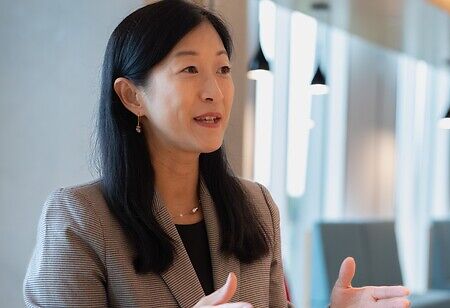
Technology Reshaping the Future of Healthcare


Sharon Chan, Head of Johnson & Johnson Innovation – JLABS Asia Pacific, 0
From working at a restaurant, to starting and transforming their own restaurant, ‘China Garden’, into a chain, Sharon’s parents taught her to dream a life beyond the walls of their shop. This eventually took her into the world of startups with Sosei Heptares, public health with Aeras a public private partnership from the Bill and Melinda Gates Foundation and big pharma, with Baxter and now Johnson & Johnson. Having been through such a journey, Sharon embraces that there is nowhere she’d rather be, than right here helping healthcare startups down a path to success.
In conversation with Sharon Chan, Head of Johnson & Johnson Innovation – JLABS Asia Pacific
What inspired you to venture into the healthcare domain?
From a young age, I had always been interested in science. At school, it became my passion, and I was lucky to be offered a place at Oxford University to study the life sciences.
There, I was exposed to neurology, renal, oncology, medical devices, vaccines and infectious diseases like TB – which certainly set me up well for my career path.
Healthcare for me has always been an opportunity to make a real difference, an honorable mission where I could apply my passion to help the people who needed it most.
But after my time at a startup and NGO, I realized something tremendously important that has shaped my career in healthcare. Partnerships between industries, startups and NGOs are critical to create products like a TB vaccine that can save lives – or even to make good medicines more accessible and affordable to the world, then we need partners.
That’s how I found myself working at Johnson & Johnson Innovation, where we believe that a great idea can come from anywhere and where through
collaboration, we work to accelerate life science innovation.
What are the major challenges that startups face in Asia Pacific?
To transform ideas from concept to commercially viable healthcare solutions, innovators need financial resources, facilities, expertise in regulatory policy and commercialization. Across the world, we see the ways in which entrepreneurs and innovators are more similar to each other than they are different.
What role do you see technology playing in healthcare?
Today, we’re seeing the continued merger of healthcare and technology, which includes an exciting move by biotechs toward IA-driven drug R&D and a rapid scaling up of AI capabilities.
We’re already seeing early signs of its ability to create efficiencies by reducing costs and shortening the time it takes to validate drug development targets.
Indeed, AI and other potentially disruptive new areas of science such as advanced analytics, regenerative medicine, 3-D printing, gene therapy, microbiome science and robotics have the potential to reshape the future of healthcare and accelerate the delivery of new solutions for patients in need.
What will be the kind of role that future leaders in the healthcare industry should play while accessing new opportunities going forward?
One thing we see consistently is the need to focus on accelerating the development of science for patients while overcoming the many hurdles to transforming great ideas into commercially viable solutions.
With the rapid pace of change in the technologies, like AI, that are available to speed up the R&D process, we see agility as a key characteristic for success among our resident company CEOs.
This ability to remain agile is vital to stay ahead of the curve, to leverage new technology and solutions, and to truly accelerate innovation to make a difference in this field.
But future leaders also need to understand that no one company can do it alone.
What are the major challenges that startups face in Asia Pacific?
To transform ideas from concept to commercially viable healthcare solutions, innovators need financial resources, facilities, expertise in regulatory policy and commercialization. Across the world, we see the ways in which entrepreneurs and innovators are more similar to each other than they are different.
What role do you see technology playing in healthcare?
Today, we’re seeing the continued merger of healthcare and technology, which includes an exciting move by biotechs toward IA-driven drug R&D and a rapid scaling up of AI capabilities.
With the rapid pace of change in the technologies, like AI, that are available to speed up the R&D process, we see agility as a key characteristic for success among our resident company CEOs
We’re already seeing early signs of its ability to create efficiencies by reducing costs and shortening the time it takes to validate drug development targets.
Indeed, AI and other potentially disruptive new areas of science such as advanced analytics, regenerative medicine, 3-D printing, gene therapy, microbiome science and robotics have the potential to reshape the future of healthcare and accelerate the delivery of new solutions for patients in need.
What will be the kind of role that future leaders in the healthcare industry should play while accessing new opportunities going forward?
One thing we see consistently is the need to focus on accelerating the development of science for patients while overcoming the many hurdles to transforming great ideas into commercially viable solutions.
With the rapid pace of change in the technologies, like AI, that are available to speed up the R&D process, we see agility as a key characteristic for success among our resident company CEOs.
This ability to remain agile is vital to stay ahead of the curve, to leverage new technology and solutions, and to truly accelerate innovation to make a difference in this field.
But future leaders also need to understand that no one company can do it alone.

